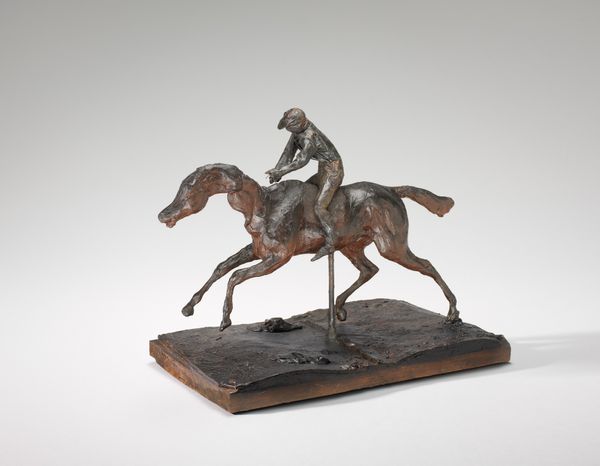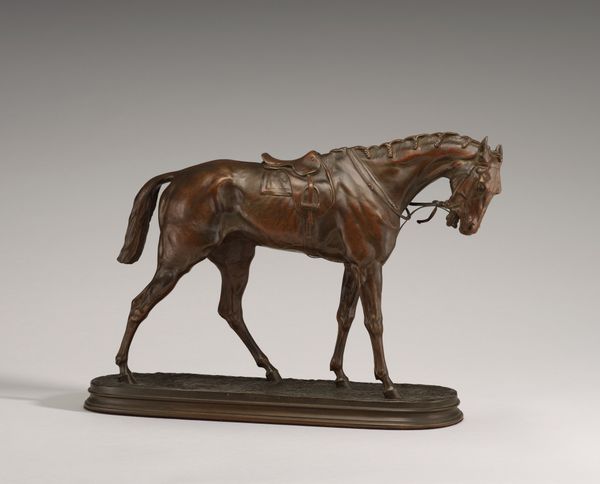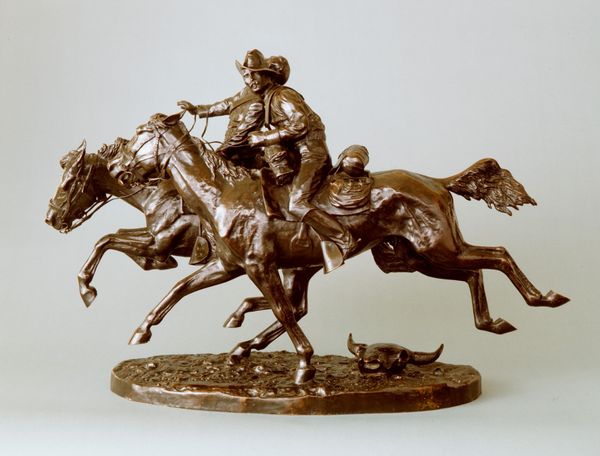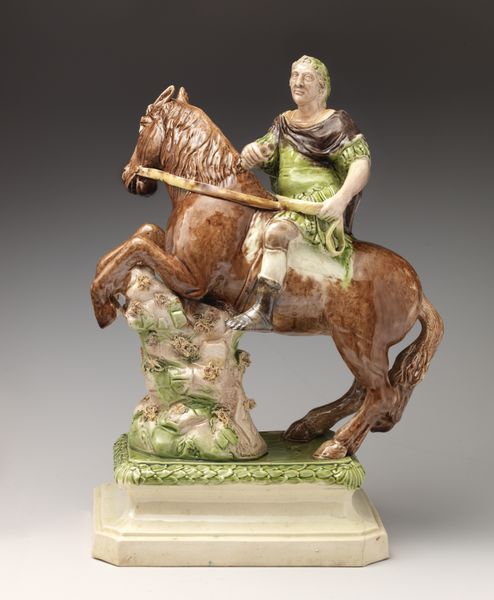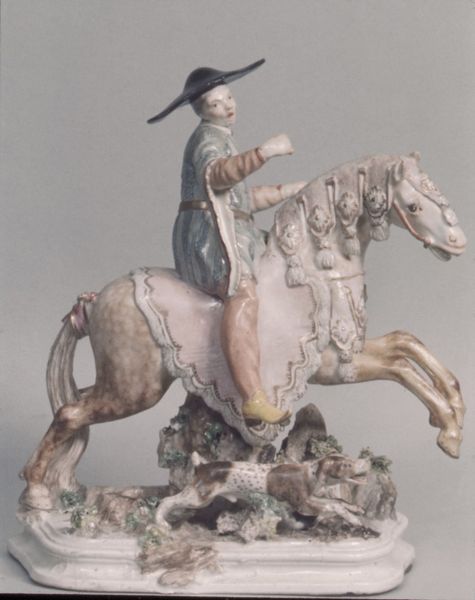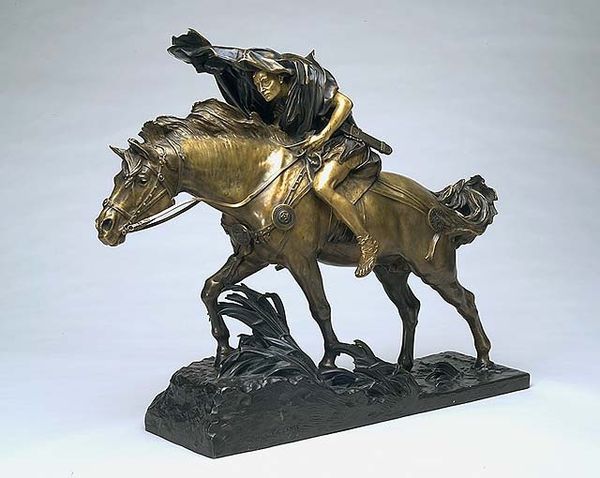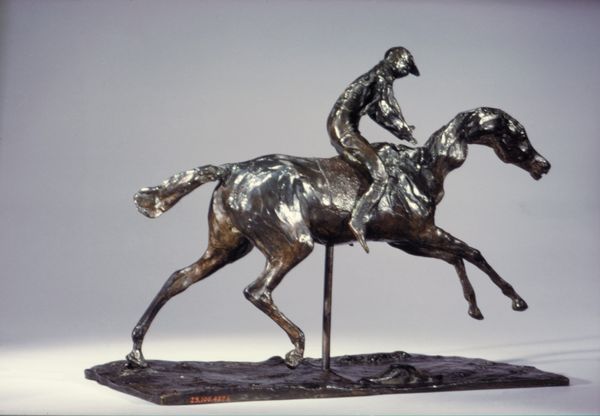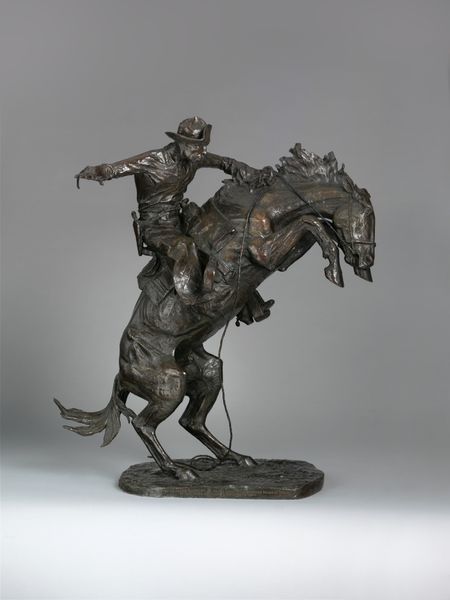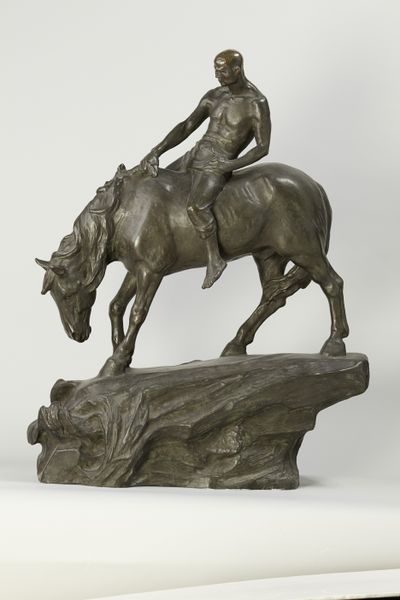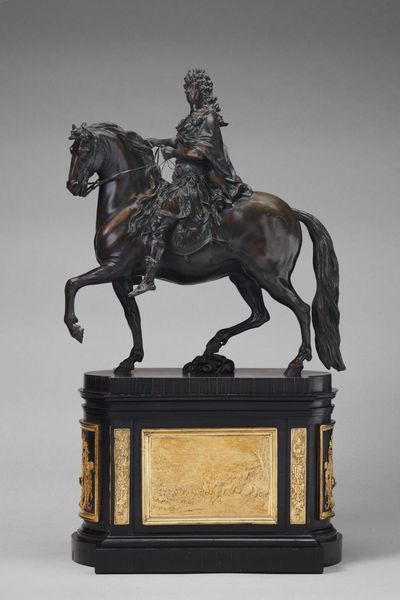
Copyright: Public domain
Editor: Here we have Jean-Léon Gérôme’s bronze sculpture, *Frederick the Great*, dating from 1899. It has such a stately, almost theatrical quality, doesn't it? The way the light plays across the bronze, defining the horse’s musculature and Frederick's posture is remarkable. What formal aspects stand out to you the most in this piece? Curator: Primarily, it’s the careful articulation of texture. Observe the contrast between the smooth planes of the horse’s flank and the intricate detailing of the saddle and the rider's clothing. Consider the sculptor’s choices in juxtaposing these different surfaces; how does it impact our perception of the work as a whole? Editor: That's interesting! The textural contrasts definitely draw the eye. The horse feels more alive, more organic, in contrast with Frederick. It is certainly making me reflect on notions of power. Do you think the composition—specifically the horse's raised leg—contributes to the work's overall dynamism? Curator: Undoubtedly. That single raised leg, defying gravity, introduces an element of instability, a dynamic tension. This compositional choice serves to activate the space around the sculpture, inviting the viewer's eye to circulate and consider the work from multiple perspectives. The negative space becomes as crucial as the solid form itself. What about the patina? How does it impact the aesthetic effect of the sculpture? Editor: I think it enhances the realism. It lends depth and a sense of age, of history, to the piece. It keeps it from feeling too polished or artificial. I’m so intrigued by how Gérôme was able to achieve such complexity and emotion using primarily form and texture. Curator: Indeed. The genius resides in its masterful manipulation of form, surface, and composition to evoke the intended effect. There's an equilibrium struck, but a charged one nonetheless, that elevates this beyond a simple historical depiction. Editor: This exercise truly illustrates the power of close observation, highlighting formal elements as keys to interpreting art! Curator: Precisely. It is through attentive analysis that we unlock the full richness of the aesthetic experience.
Comments
No comments
Be the first to comment and join the conversation on the ultimate creative platform.
